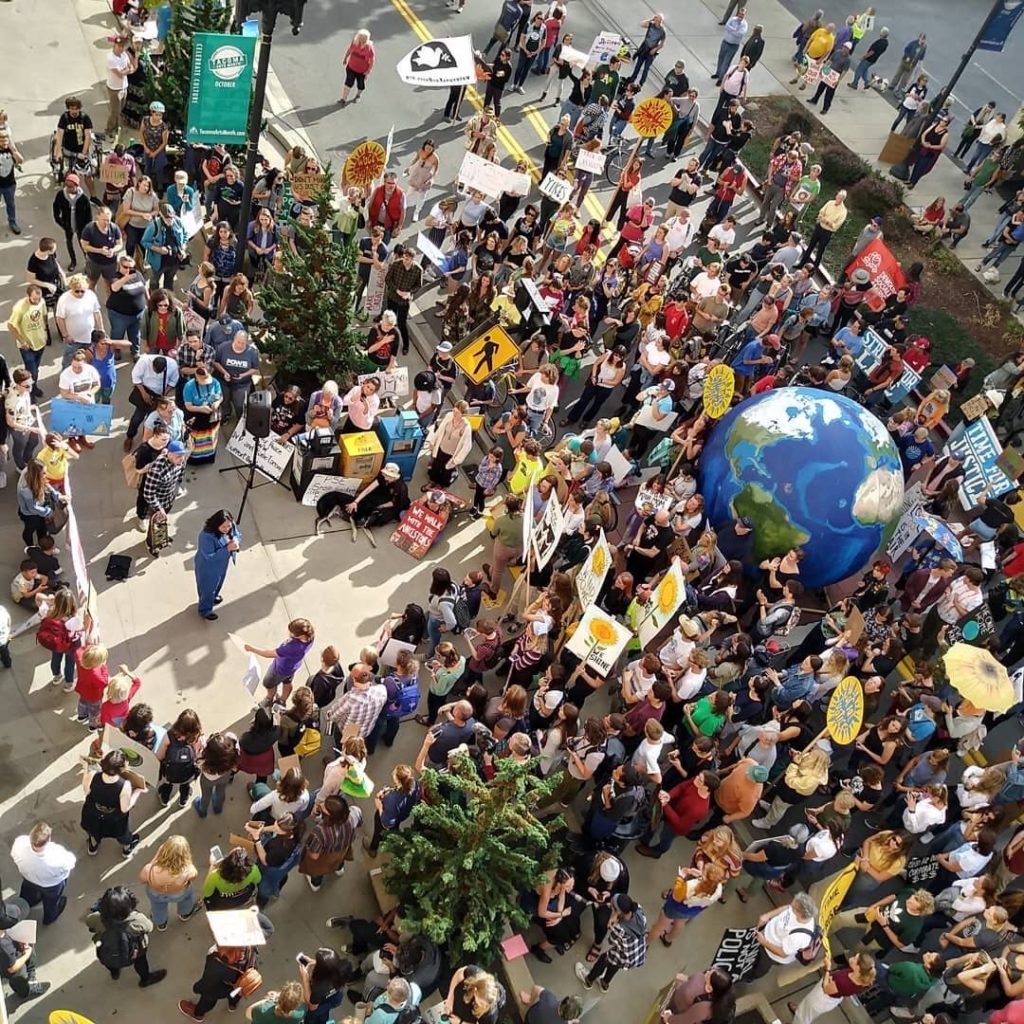Land use policies as the nexus of climate, housing, and environmental justice
Land use policies touch every aspect of our lives — from housing availability and transportation systems to protection of vibrant farmlands and rural landscapes. When we look at how our communities were designed, what we see are deliberate land use choices at the intersection of climate, housing, and environmental justice. Decisions made about land use directly impact how we either address or exacerbate our state’s most pressing ecological and social crises. These policies determine the health and resilience of all of Washington’s communities — rural, urban, tribal territories, suburban, and everywhere in between.

Housing
It’s no accident that land use policies have harmed Black, Indigenous and other communities of color. Policies like redlining and racial covenants deliberately segregated neighborhoods, defining where certain types of housing was built and who had access. These laws have systemically applied racist zoning practices in order to marginalize communities. The legacies of these policies have pushed Black, Native, and other communities of color to neighborhoods close to highways, airports, polluting industries, and hazardous toxic waste sites — the same neighborhoods where property values are low and infrastructure and public resources have been neglected and underfunded. This is neither good use of land nor is it a fair or equitable treatment of people.
All across Washington, affordable housing supply gravely lags behind the need, and the cost of rent has risen sharply while wages remain stagnant. These deficits are exacerbated by racist exclusionary zoning — practices which keep low-income and communities of color from accessing housing in certain neighborhoods. Racist zoning shows up in many different ways, from historical redlining practices to modern day regulations like height limitations or residential zoning that only permits single-family housing. These policies hinder our ability to build the affordable and diverse types of housing that our communities so desperately need. People are then more likely to be uprooted and displaced, and more at risk of being unhoused.
Thoughtful land use policies should create strong communities where people feel safe, healthy, stable and protected from displacement.

Transportation
Land use policies also impact transportation access. Some regions are designed with public transit, walkability, and multimodal options in mind, while other regions almost exclusively require a personal vehicle.
Embracing multimodal transportation planning for our communities can reduce our reliance on single occupancy vehicles and, as a result, reduce carbon emissions. Multimodal transportation planning considers all modes for getting around communities, such as walking, cycling, automobile, and public transit. This approach can ultimately result in inclusive communities where everyone has an equal opportunity to get where they need to go, regardless of race, income, or ability. Having a plethora of transportation choices, alongside abundant housing access, makes daily life more equitable, sustainable, accessible, and efficient.
Environmental Justice
Some of the most racially diverse communities statistically live in the more polluted, less transit-accessible parts of our cities and towns. Neighbors in these communities typically breathe in more toxics; commute long hours to get to work and school; and have less access to nature and parks. Again, this is not an accident but by design, due to racist land use policies that continue to impact us today. That harmful legacy of deliberately segregated neighborhoods is exacerbated by modern policies and processes that do not center the communities most impacted. Moving forward, land use planning and development must utilize community-centered processes that uphold the concerns, hopes, needs, and wellbeing of those they seek to serve. To learn more about compounding environmental health disparities across the state, check out the Department of Health’s Washington Environmental Health Disparities Map.
Protecting Farms, Forests, and Rural Life
Planning for urban growth impacts the preservation of forests, farms, and rural life. Urban sprawl – i.e., unrestricted growth of housing, roads, and businesses outside urban areas — eats up natural areas and working lands. The loss can undermine our ecosystems and their ability to store carbon, threaten other species, hinder natural resources and food economies, and harm livelihoods of rural communities. Development into wildlands can also expose communities to greater wildfire risk.


A major responsibility of land use policies is balance – balance between urban needs and rural character, balance between ecology and industry and community. That balance can’t be achieved by finding a solution somewhere in the middle but by recognizing what needs must be met for the whole system to thrive. As we prioritize dense, housing-rich, healthy, affordable, walkable and transit-oriented urban design, we, in turn, preserve the integrity of our rural communities, working lands and natural ecosystems by concentrating that growth.
When we recognize the relationship between how we design our communities and their overall health and resilience, we can make bold and comprehensive land use choices that combat climate change, the affordable housing crisis, and environmental injustices across the state.


